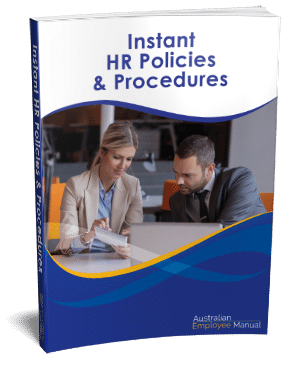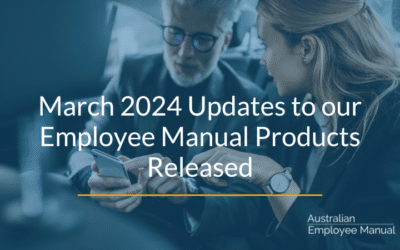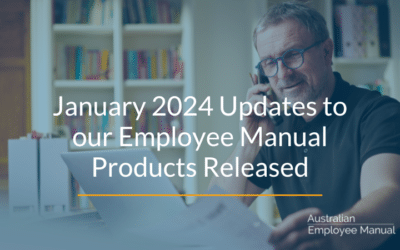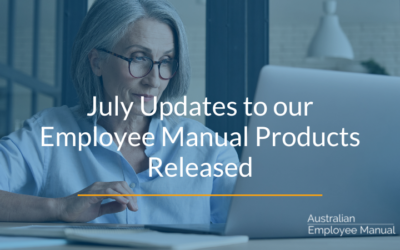Whether you have them written down or not, every business has operating procedures and guiding principles. These are “the way we do things around here” and are designed to:
- Guide decisions and actions.
- Get consistency of approach.
- Clarify expectations.
- Save time.
But when you have more than one employee, verbally communicating how we do things can get muddled. People forget who has been told what, and things that the boss assumes everyone understands turn out to be conversations they held with someone who has long left the company.
This is where writing your HR policies and procedures down can help. By having documenting them and making them freely available for people to access and read, you can save time and stop reinventing wheels.
Writing employee policies can be daunting, but all organisations need clear and concise policies and procedures that are communicated effectively to employees.
What’s the Difference Between a Policy and a Procedure?
Policies and procedures are both important components of an organisation’s governance and management.
However, there is a difference between the two.
A policy is a set of guiding principles or rules that outline the organisation’s objectives, goals, and expectations. Policies are usually written broadly and generally and provide a framework for decision-making (e.g., we don’t tolerate workplace bullying). They help establish the overall direction and culture of an organisation.
On the other hand, a procedure is a step-by-step process that outlines how a specific task or activity should be performed. Procedures are more specific than policies and provide a clear and detailed set of instructions on carrying out particular tasks or processes by which the policy is implemented.
In essence, policies provide the “what” and the “why,” while procedures provide the “how.”
Policies set the guidelines and principles that govern decision-making, while procedures provide the steps required to implement those policies.
That said, unless you are going for Quality Accreditation, separating your policies from your procedures often only confuses your employees as to what they need to do.
Some employees only read the policy bit, and others only read the procedures section, leading to confusion and inadvertent non-compliance.
In our experience, merging the two into one document makes it more likely that your employees and managers read, understand and comply with your directions.
What is the Format for Writing a Policy or Procedure?
There are as many different ways to write policies and procedures as there are ways to paint a picture.
If your business is undergoing quality accreditation, then you are obliged to format your manuals in a specific rigid fashion, with the first page and a half of each policy listing out details including version control, the person responsible for the policy, who it applies to, delegations, linkages to other policies or legislation, review processes and so on.
In our experience, this makes policy manuals (which are hard to get people to read at the best of times) almost guaranteed to become a dust collector on a bookshelf somewhere.
Yes, you need these details, but if the supporting guff is longer than the actual policy (or if it takes too long to find the answer someone is looking for), people tend to take action first without reading the manual and worrying about the consequences later.
For most small businesses, HR policy and procedure manuals are more informal. They simply outline what is to be done and by whom.
Ensure you include all the steps needed to occur and the order in which they occur. This is where input from your team members can be invaluable.
How To Write Workplace Policies and Procedures
Here are some steps to help you write effective employee policies:
Identify the policies you need
Start by identifying the policies you need based on your organisation’s size, industry, and culture. Some common policies include Codes of Conduct, leave, sexual harassment, social media, and internet policies.
Identify key stakeholders
Identify the key stakeholders affected by the policy or procedure, involve them in the process, and obtain their feedback. This may include managers, a workplace relations lawyer/HR consultant, and employees.
Research the legal requirements
Make sure you research the legal requirements related to each policy you want to write to ensure compliance with laws and regulations.
Determine the purpose and scope
Before writing the policy or procedure, determine its purpose, scope, and intended audience. Define what the policy or procedure will address and to whom it will apply.
Research and review
Conduct research and review best practices, relevant laws, and regulations to ensure your policy or procedure is compliant and up-to-date.
Customise it for your business
Every business is different, and your employee manual should reflect your company’s unique culture, values, and policies. Make sure that the manual is tailored to your company’s specific needs.
Obtain approval
Once the policy or procedure has been finalised, obtain approval from the key stakeholders and your management team.
Review and update policies regularly
Review and update your policies regularly to ensure they are up-to-date with any changes in the law and remain effective and aligned with your organisation’s culture and practices.
Language Style Guide for Policies and Procedures
The language style used in a policies and procedures manual should be clear, concise, and straightforward. It should be easy to understand for all employees, regardless of their level of education or position within the organisation.
The best policies for small businesses (meaning the ones that actually get read and actioned) are simple, easy to understand and conversational in tone. Yes, have your company lawyer vet the words to make sure you have not unwittingly created a legal minefield, but don’t let them change the overall tone of the language.
People need to understand what you are asking them to do if you have any hope of compliance.
Here are some tips for the language style in a policies and procedures manual:
Use simple language
Write directly to the person reading the policy in easy-to-understand language. For small businesses, using the word “you” in your policies is fine to aid clarity of understanding.
Avoid using complex words or technical jargon that may be difficult for some employees to understand. Use simple and plain language instead.
Be concise
Use short sentences and paragraphs to keep the manual easy to read and navigate. Avoid unnecessary or redundant information.
Use active voice
Use the active voice to make the manual more engaging and easier to understand. For example, “Employees must complete the form” instead of “The form must be completed by employees.”
Be consistent
Use consistent terminology and language throughout the manual to avoid confusion or ambiguity.
Be specific and detailed
Be specific and detailed in your policies to avoid any confusion or misinterpretation
Avoid biased language
Use neutral language that is free of bias or discrimination. Avoid using gender-specific language or language that may be offensive.
Use headings and subheadings
Use headings and subheadings to break up the content and make it easier to navigate.
By following these steps, you can write effective employee policies that help create a positive and productive work environment for your employees.
HR Policy Templates
If you would like pre-prepared HR policy and procedures templates for your small business and save weeks of writing, then check out our Instant HR Policies and Procedures Manual. They are specifically written for small to medium-sized businesses, are fully compliant, and contain HR policies and procedures to match most situations.




